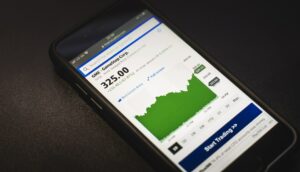The foreign exchange market, commonly known as forex, is a decentralized global market where all the world’s currencies are traded. It is the largest and most liquid market in the world, with an average daily trading volume of around $6.6 trillion. Forex trading allows individuals, institutions, and corporations to buy, sell, and speculate on currencies. Understanding the basics of live forex markets is essential for anyone interested in entering the exciting world of forex trading.
One of the key features of the forex market is its accessibility. Unlike other financial markets, such as the stock market, forex trading is open 24 hours a day, five days a week. This means that traders can participate in the market at any time, regardless of their geographical location. The market opens on Sunday evening (EST) with the Asian session and closes on Friday evening with the New York session.
The forex market is not centralized and operates through a network of financial institutions, such as banks, brokers, and electronic trading platforms. These institutions facilitate the buying and selling of currencies by matching buyers with sellers. The exchange rates of currencies are determined by supply and demand factors, as well as various economic and geopolitical events.
To participate in live forex markets, traders need to open an account with a forex broker. A forex broker is a financial institution that provides access to the forex market and facilitates trading. There are many forex brokers available, and traders should choose a reputable and regulated broker to ensure the safety of their funds. It is also important to consider factors such as trading platforms, spreads, leverage, and customer support when selecting a forex broker.
Once a trader has opened an account with a forex broker, they can start trading currencies. The most commonly traded currency pairs are known as major pairs, which include the USD/EUR, USD/JPY, and USD/GBP. These pairs have the highest trading volumes and are considered the most liquid. Traders can also trade minor pairs, exotic pairs, and even cryptocurrencies against major currencies.
Trading in live forex markets involves buying one currency and selling another simultaneously. For example, if a trader believes that the euro will appreciate against the US dollar, they would buy the EUR/USD currency pair. If their prediction is correct and the euro does strengthen, they can sell the pair at a higher price, making a profit. However, if the euro depreciates, they would sell the pair at a lower price, incurring a loss.
To analyze live forex markets and make informed trading decisions, traders use various technical and fundamental analysis tools. Technical analysis involves studying price charts, patterns, and indicators to identify trends and potential entry and exit points. Fundamental analysis, on the other hand, focuses on economic and geopolitical factors that can influence currency prices, such as interest rates, inflation, and political events.
Risk management is a crucial aspect of trading in live forex markets. Traders should always use appropriate risk management techniques, such as setting stop-loss and take-profit orders, to limit potential losses and protect profits. It is also important to diversify trading strategies and not to risk more than a certain percentage of the trading capital on any single trade.
In conclusion, understanding the basics of live forex markets is essential for anyone interested in forex trading. It is a decentralized global market where currencies are traded, and it operates 24 hours a day, five days a week. To participate in live forex markets, traders need to open an account with a reputable forex broker. They can then trade currency pairs based on their analysis of price charts and fundamental factors. Risk management is crucial to protect against potential losses. With proper knowledge and skills, forex trading can be a profitable venture.





